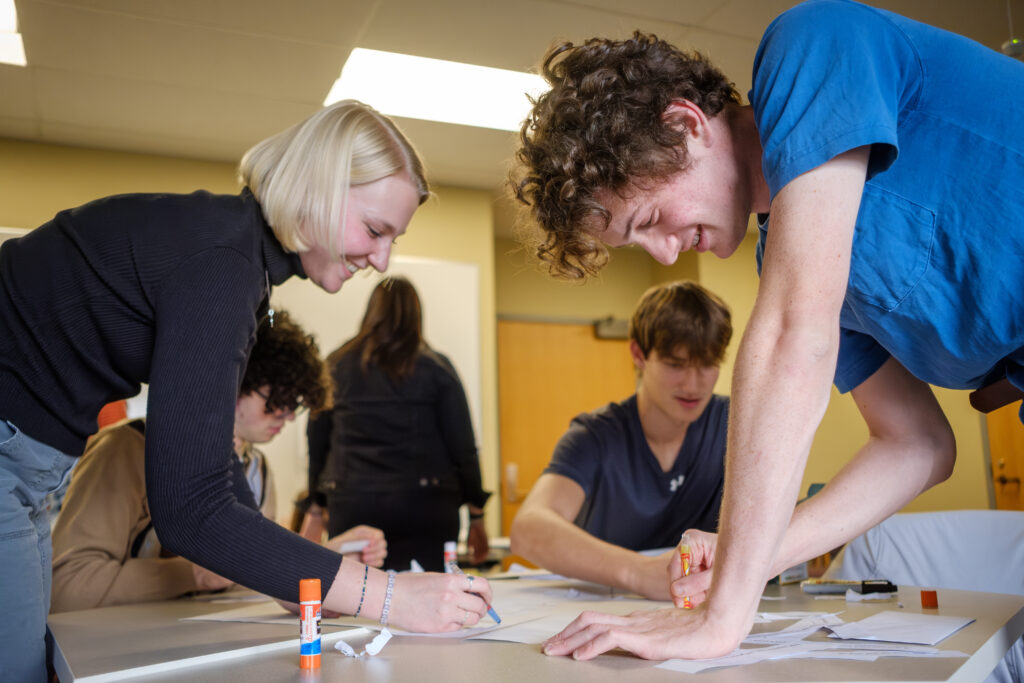
Worldmaking: Thought, Place, and Action in Education
Where does education exist? Is school the primary place where we learn about the world? These questions anchor the first-year course, “Worldmaking: Thought, Place, and Action in Education.” We caught up with Dr. Cait Bergeon, co-teaching with associate professor and chair of Educational Studies, Dr. Brian Lozenski, to learn more.

What’s the main goal of this course?
Professor Lozenski and I were intentional to build arteries into the Twin Cities in a myriad of ways. Education can be found on picket lines, in our family’s kitchen, in hair salons, on public transportation, and in the woods.
Our class engages in a holistic exploration of land-based education, activist and labor organizing, and the arts in communities who center the cultural contexts of education. We focus on the voices and histories of marginalized communities, including Indigenous communities, communities of color, queer, and activist spaces. The goal is to expand students’ conceptions and borders of education beyond the formal classroom, and to grapple with the symbiotic relationship between education and worldmaking.
Field trips
We took an East Side Walking Tour of St. Paul with Emeritus Professor Peter Rachleff, who shared about the area’s labor history and introduced students to the mission, values, and programming of the East Side Freedom Library. We visited the Black Youth Healing Arts Center to learn about their community engagement work.
Students learned more about Traditional Ecological Knowledge while visiting Philadelphia Community Farm, an intergenerational, multi-abled, BIPOC and LGBTQ-led and centered farm community and nonprofit in western Wisconsin. We visited the Indigenous Food Lab in Minneapolis to learn about food sovereignty and Indigenous food systems.
What do you hope students learn?
In their first year at Macalester, I hope students begin uncovering place-based stories and histories—questioning whose voices are we hearing and whose voices are we not. This course invites them to connect with the Twin Cities and examine how education can be boundless and flexible. I hope students leave with more questions than answers and find themselves reimagining what their future studies can look, sound, and feel like.
Memorable moments
I love exploring found poetry with students for its flexibility, creativity, and depth. In one class, I refashioned lines from our assigned readings into strips of paper for students to create their own poems. Some drew pictures around the poetic lines and others cut up words to form new sentences. That’s my favorite part of teaching: watching students illustrate their ideas in the ways most authentic to them.
January 8 2025
Back to top




